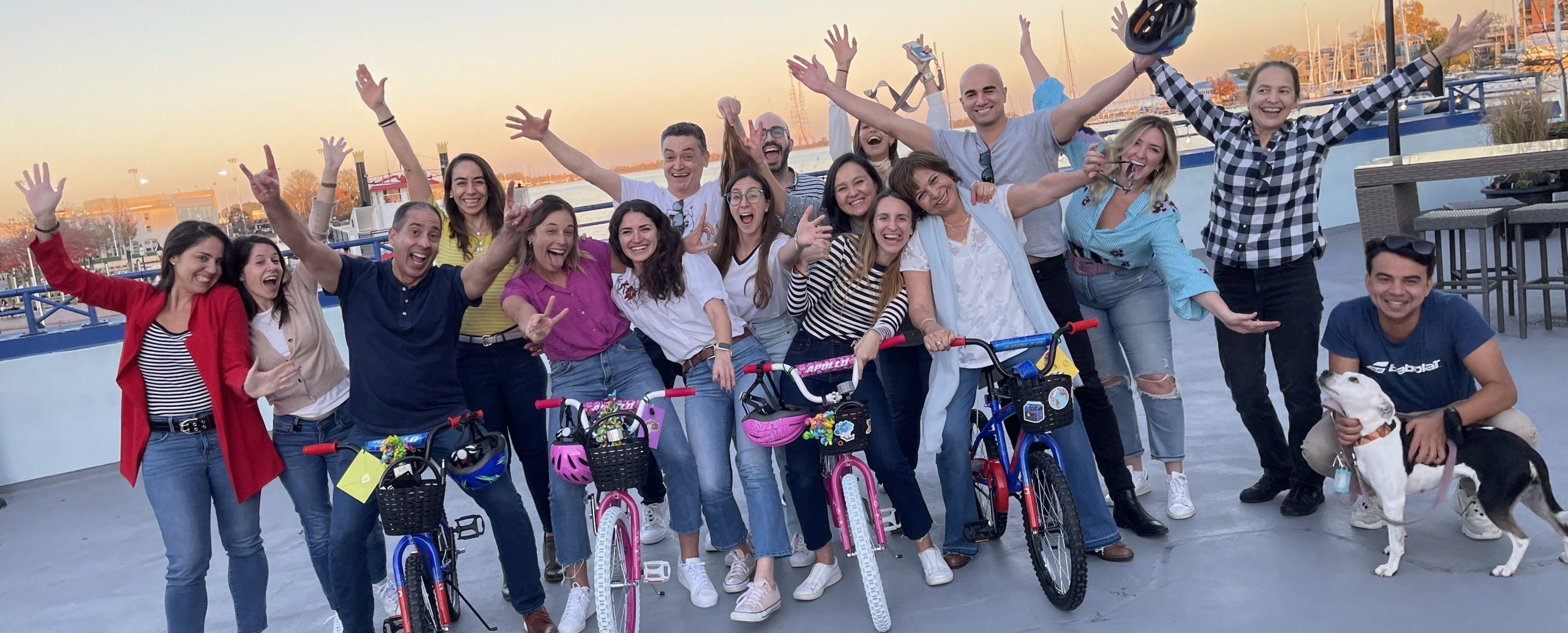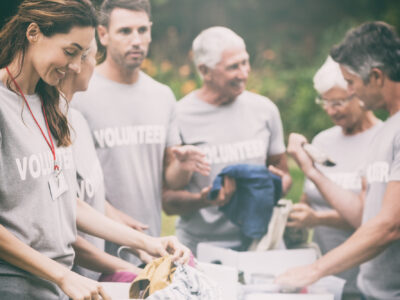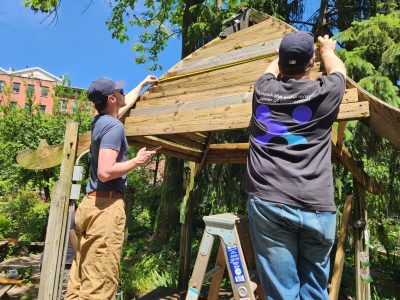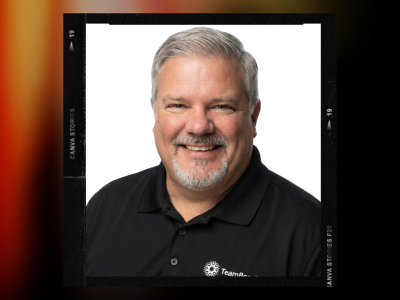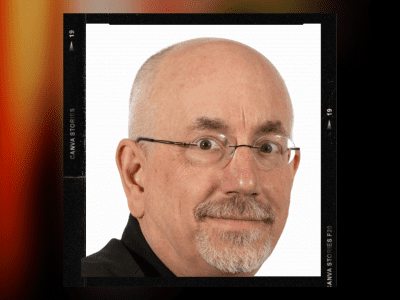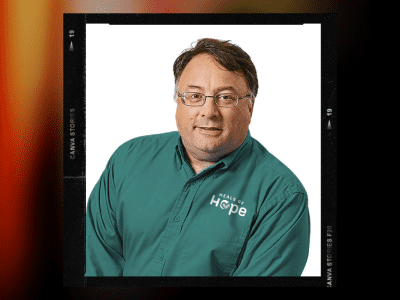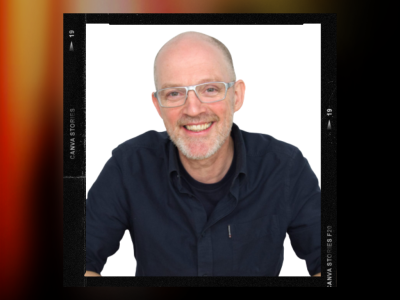STRONG TEAMS DON’T HAPPEN BY CHANCE 
Corporate Social Responsibility
w/ Stuart Downie and Baylee Goldstein
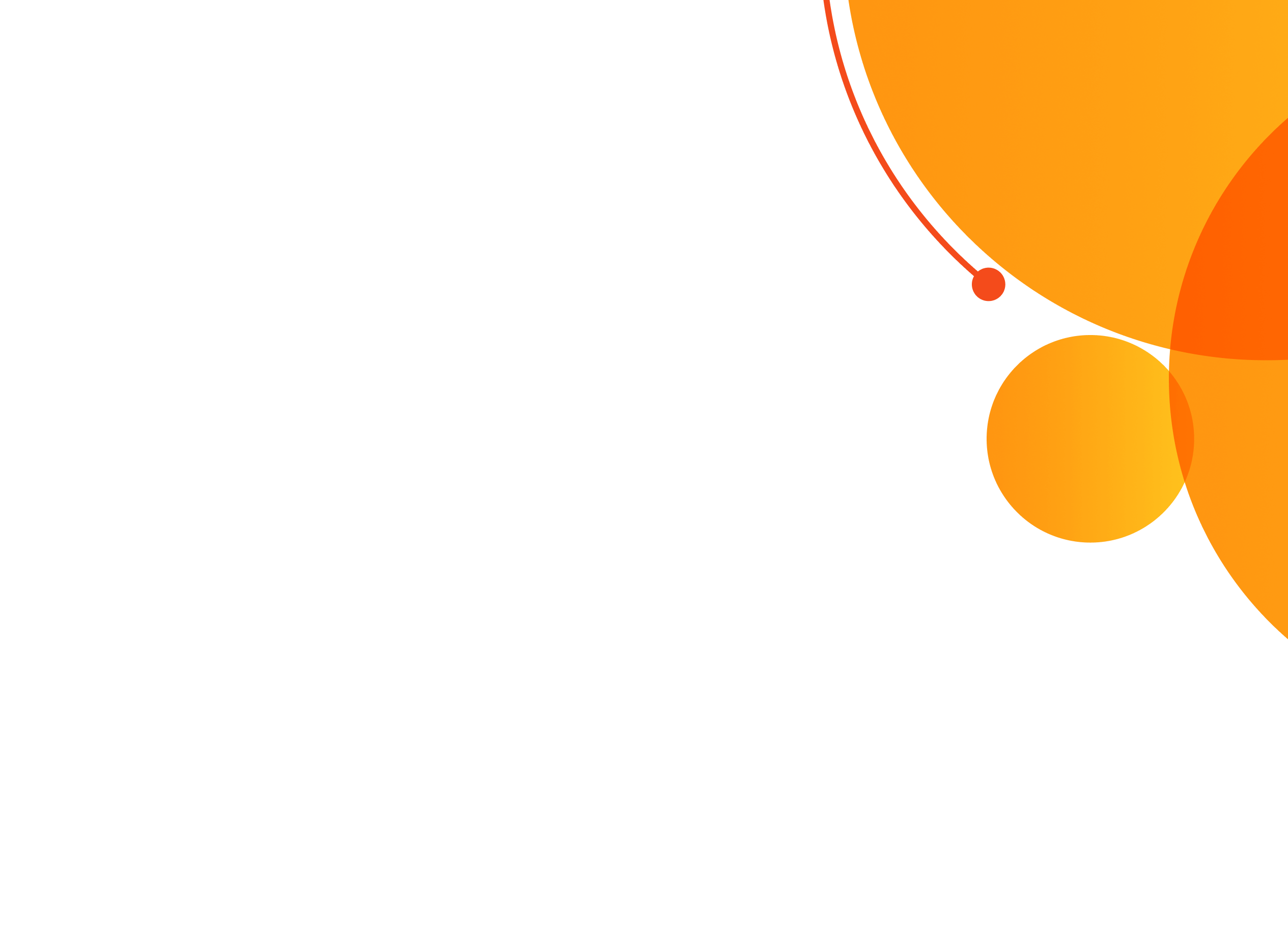
Use the buttons above to listen now.
Transcript - Corporate Social Responsibility
Rich: On this episode of team building saves the world.
Bailey: You’re seen everywhere. So your image matters and who you are matters and what you do matters. And I think people see that, right?
Stuart: So as soon as the pandemic hit, we had to think about ways to achieve that when people couldn’t be together anymore,
Bailey: how do you work with a nonprofit and not just give them money?
Stuart: What our reputation is becoming. Yes, we can do that.
Bailey: If Stuart has to a jump into a truck to make it happen. We’d rather do that. than it did not happen.
Stuart: She said I would jump in a truck and drive it there. She didn’t say she was.
Rich: Hello team. It’s me. Your old friend, Rich Rininland host of team building saves the world, The show where I speak to the leaders and innovators, the team building industry from all across the globe, trying to find out what about that industry is so important, especially in the world today. And today we’re talking about giving back and social responsibility with the CSR team from team bonding, Bailey, Goldstein, and returning friend of the podcast, Stuart Downie
but first I need to share some love with my supporters of team bonding. If your team is ready to experience teamwork, the power of play, then please visit team bonding.com to learn more. Now team join me in welcoming team bonding, CSR team, director of team bonding, CSR Stewart, Downey, and senior manager of CSR program.
Bailey Goldstein. Hi guys.
Stuart: How you doing?
Rich: Bailey? Just so you know that some small, uh, applause that I have going on because Stewart demands it in his rider
Stuart: continuous applause. Correct.
Rich: So we’re talking CSR today. Why don’t you guys start off? Just whoever. Just tell my team out there, what CSR actually is.
Stuart: Yeah, absolutely. So CSR stands for corporate social responsibility. And the idea is that a company out there that wants to give back to the community, give back to nonprofits, give back to charities across the local area, national level. Globally can do that by adding a CSR effort for their team. It also means that it gives their employees a chance to volunteer and give back too.
So that’s really the basis of what CSR stands for to me. Barely.
Rich: Does it say anything more
Bailey: for you? Yeah, I mean, I think that is what CSR stands for and then uniquely, what we do in CSR is we take team building, like what drives our team bonding way. I made that team bonding CSR. So we’ve combined team-building and social responsibility.
Kind of create this like groundbreaking, nonprofit align, volunteer programs in a unique way to really put high impact as well as really bring rewards for nonprofits as Stuart said globally.
Rich: Let’s actually talk about why this is so important. I mean, I can remember a time where this wasn’t even anything that was up for discussion.
You know, when I first went into the marketplace, this was not anything I was looking at or, or even would become aware of for you. So why is CSR so important? Why is it becoming a topic of conversation today?
Bailey: I think people are choosing their company differently now, especially since you’re look you’re in this world of a post pandemic.
So you’re looking at like what your company has to offer and millennials and whatnot are choosing a company based on who the company is and what the company you can give to them. And I think when you’re looking at a company you’re looking for a company that gives back a company that does well, um, it’s like statistically shown that people will choose a company that gives back more.
Rich: In point of fact, there was a Gallup study that came out in like 2014. Then it’s at like seven to 11% of a company’s whole, total value is even based on CSR. But why? I mean, why should this be the pivot that companies are making? And do we know when this became so strong Stuart?
Stuart: I think it’s, I mean, I’ve, I worked for a charity in 2000 and. Oh, what was it? 2006, seven, 2006 and seven. And it was a, um, you know, it was really interesting working on that side of it because what that charity wanted to do was reach out to, instead of just reaching out to individuals for volunteering or for specific donations.
Corporations, I think have a, have an onus to do that. You know, they, they are employing a lot of people. They’re making a lot of money and at a certain point, that company should start thinking about how they can give back to the community that they’re impacting and what I was working for this particular nonprofit that’s one of the sort of areas that they focused on was which companies can we. Talk to about how they can help us a little more than an individual would. And they’ve got a, you know, a group of employees that might want to get out and plant a garden, a vegetable is for a local community or, or do you know, whatever it might be doing? The nonprofit I was working for was actually a sailing academy
um, and we would reach out to corporations to sponsor school groups of disaffected youth to come to us and learn how to sail. And that’s kind of what that was the part that we did, but we also charged individuals for course. A pretty good amount of money. We were pretty high-level sailing school and use profits from that to also help other groups and other schools and other kids, because we knew the outdoors could help them within their efforts and within the hardships that they were feeling.
So I think the cool thing is that a company can really think about the pillars that they want to align to in regards to the. Impact. So if there a specific, you know, if they’re a oil company, maybe they want to think about environmental options in regards to giving back and you know, how many trees they could plant to offset the carbon emissions of their plants.
There’s a, there’s one part of it. To be good to do the right thing yes. And that’s how you get a better employee base of the nice people that want to work for you and enjoy it. But, but it’s also a marketing thing. Like you get to tell everyone, yes. You know, we’re producing gasoline for your cars and unfortunately that’s not great for the environment, but we’re also planting hundreds of thousands of trees to try and offset.
We, you know, we know it’s not that great of a thing to be doing, but at the moment it’s a need to operate a lot of things. So how can we make that need better as a company and in the public eyes?
Rich: Yeah. Being someone who was raised in the eighties and nineties, I came up from a world where. You know, we were taught to beware the mega conglomerates.
We were taught that that was the evil of capitalism that everybody else in the world talks about when they, when they generally talk about it. So is this just a way for them to make themselves look better or are there other, other, other things because yes, you’re absolutely right. Giving back very important.
I’m not going to say that it’s not, it, it absolutely is. It’s an important role that everybody has to play, but what else can a company gain besides a better image to bring in new employees.
Bailey: Yeah. I think our corporate social responsibility is a full, like when you add CSR into your company, you’re not just looking at events you’re starting with.
Okay. Does my company recycle, like adding recycling bins, adding stuff to the environment it’s also looking at what does our company do as a whole? Like, are we like if your shipping company or driving company, how much gas are we using? Can we be more efficient? Can we put. Driving. It’s looking at everything they do as a company and making it more corporately, social responsible, and like looking at as a whole.
And then it’s also an outward image of who you are. I think it looks at back on. As you said, I, even myself, I started with being able to look at a company through glass door and I could see reviews that accompany gave if I could see what the company did, but now there’s Instagram. Now there’s YouTube.
There’s Facebook. There’s the news. I can get the New York times on my phone. I can look at anything I want before I start with the company. So companies are more able to be seen. You can look them up, see what they did see their impact. So it’s not about. Who they are just based on reading and covering up what they did in the past.
It’s really like you’re seen everywhere. So your image matters and who you are matters and what you do matters. And I think people see that and to get, like, to get clients, to get employees and to just be a good person, a good company is really what you do to make yourself corporately responsible. Um, and then I think it just like changes in the attitude of all of those people, people who work there, people who want to work with.
Rich: What about the, what about the.
Bailey: Yeah. So I made it, you look at, um, the Prius, like as a huge car, like people are going, or the Tesla is huge. I mean, it’s when you really look at the Tesla, you’re looking at, it’s honestly more expensive at the end of the day to buy that car than to like buy a regular car and pay for gas.
So people are so sold on the idea that you’re not putting gas into the world. You’re being like social responsible by like choosing a Tesla because you’re doing energy. They’re choosing that because of the whole, like gimmick behind the Tesla. Hey, you can only drive for two and a half hours before you have to charge for 20 minutes.
So it’s that whole concept of like selling the consumer on using them for that idea of being like social responsible.
Stuart: There’s a lot of studies and statistics now showing that consumers are more likely to trust companies who include social responsibility in their branding. And then those companies tend to have a better, better reputation from it.
So not even the fact that they should be doing it and all the beneficial reasons for doing it. It’s actually something that consumers looking for. There was a, uh, a Nielson study in 2015 saying that more than 50% of consumers are willing to pay more for a product or service. If the business prioritizes say sustainability, you know, these are all things that companies need to think about if they want to be successful in the future and keep up with the current ziegiest.
Rich: Let’s look at the current because as we know for the last year and a half, everything has changed. Has CSR changed as a result of COVID-19 and the new way that people are working?
Stuart: Absolutely. So that’s Bailey and I said it exactly the same time. So it’s, it’s been really interesting cause CSR used to be, get your team together, build a bunch of kits for.
Cancer patients build a bunch of kids for military veterans, you know, or the homeless and kind of everyone got together. And I think everyone sort of saw that volunteering as a group activity that was done in a big space where boxes were built and donated. Right? So as soon as the pandemic hit, we had to think about ways to achieve that when people couldn’t be together.
And what we did. And I think one of our biggest strengths is connected with the nonprofits that were being impacted by no longer having these big donation drives. And discuss with them what their needs were specifically. Then work that back into the different pillars that not all the companies we work with, have it and make sure that it aligned and we could pull it together.
And then we actually designed. Kits with these non-profits that we could ship to individual’s homes to make an impact. And they could either be shipped back to the nonprofits or the awareness or the education or the item, like our bee kits. For instance, that helps a cause called save the bees. You know, they could be left in someone’s backyard, but it would help save the bees during difficult times and give them a home and, and that sort of thing.
So we worked with all these different nonprofits to come up with all these different programs that could really help. Benefit raise awareness, educate. And some of the programs also have kits that actually get donated directly to the nonprofit or charity to,
Rich: so we’re starting to get into more of the different levels and different, the different possibilities of CSR so, what are they as a corporation? Let us say once again, my favorite, my favorite question of every podcast, I am a CEO. I’m looking to increase my company’s social profile. What are the different things that I could be doing?
Bailey: So I think specifically how we pertain to it. We can help employee engagement and employee participation and volunteer hours so that you can look at a company can go and become corporate leaders.
in social responsibility, really what you were saying. Someone comes in and analyzes like what they do as a company and how they can produce it. On our end on team bonding CSR is we can really help those employees be pulled in and be engaged and feel part of. That volunteer efforts. And through that, we have created these like virtual opportunities as well in person opportunities to really engage the participants and allow them to feel like they’re giving back with their company.
And a lot of what Stuart, it was saying it touches on the fact that how do you work with a nonprofit and not just give them money? Like, if you want to really engage them and you want to give a high impact, but you need to do more than a donation. Like a company could donate to someone. Absolutely. And I think that’s what we’ve solved.
I, we worked with so many nonprofits in the last year and met with them. And then the first thing they asked for is like, we need money. And then we move with them and say like, well, what can people physically do to volunteer with you? And how can they do that virtually? And that can come from letter writing that can come from recording videos that can come from.
You building awareness, like the bee cause project that Stuart touched on and we give awareness to how to save the bees. Then they actually build Mason jar, beehives, and put them outside their home, or one tree planted where they actually get a seedling and they, and they plant an entire pine tree all over the country.
So we’ve taken the idea of how can we take the non-profits what’s the impact and what we can we give to them. So if you were the CEO and you wanted to take your employees and have them volunteer. That’s where we would piece it and then we would manage that entire system with that.
Stuart: Yeah, no, I just think it’s exactly that it’s really trying to work with the company, work out exactly what they want and align it to what the non-profits needs are.
That’s the biggest thing we do. Um, we just do it in a engaging. And fun when appropriate way
Rich: with that in mind. Let me actually stop you right there. I want to step away just for a quick second and tell my team out there about a company we’re all very proud to work for team bonding. Team bonding was founded over 20 years ago with one simple question.
How can employees have a great time while fostering strong, authentic bonds between people who work together? They’ve created a catalog of innovative events using the power of play as a learning tool and tapping into the correlation of work and. From scavenger hunts to jeopardy and so much more the team bonding of activities live virtual and hybrid.
Maximize the impact of team building with an accent on fun. Visit team bonding.com to schedule your event now, team bonding when you want seriously fun results. And we’re talking CSR with Bailey Goldstein and Stuart Downey. All right, let’s get into it guys. Let’s talk about team. And how it relates to CSR.
How did this begin? What did we look like in the early days of this?
Bailey: I think that really, when you look at what team bonding. We’ve always had charity programs. There has been charity bike builds where we’re working with the boys and girls club and building bikes and donating them. We were doing the food drive where we were kind of playing the prices, right.
Games and donating to food drives. So we had that concept, but we were building those out, thinking about fun and then ending it with impact I think what team running CSR did was we reversed it. We said, we need to look at the impact and then add the fun to that and make it engaging and great. So instead of starting with the team building, we start with the nonprofit, as we’ve kind of mentioned this podcast so far.
So we look at our network of nonprofits. We vet them first. So we work with the girl Scouts of Northeast, Texas. We with one of my Donald House, calmer choice, boys and girls. The bee cause project, we make sure that they’re all 5 0 1 C3 non-profits that they’re all have great social media, that they all are really good people to work with.
And then we look at what do you do? Do you need like operation gratitude needs, pair, cord bracelets that are literally life-saving tools that send overseas, find your anchors as suicide prevention. What do they need? They needed voices. They needed different faces of diversity to show why people live. And then we took those and turn them into team-building events.
So we looked at all of our resources and we have a fulfillment center. So we started building. And we have a amazing field of networks. We have a voice coach. So we turn these whole events to look at, find the anchor. They needed an amazing program where people recorded videos of why they live. So we’re like, how do we take that and turn it into a team building event.
So we created this whole experience where people use a voice coach where they learn how to stand in a video where they should be in a screen, kind of have fun together. Do voice exercises and then they record videos for non-profits. So you laugh together, you have fun and you make a huge impact. And then you end it by really being impacted again and learning that, Hey, listen, you could have saved someone’s life today instead of just ending it with, okay guys, great team.
Like Stuart’s trivia team one. You just like together, you literally. And I saved a life. So it’s just a different experience
Rich: Stuart, what did it look like? Getting from the beginning of we’re going to build some bikes and we’re, and by the way, guys, while you’re having fun building these bikes, here’s the kids that these bikes are going to go to from a local charity.
How did it get from that to where we are now?
Stuart: Like Bailey said, we, we really went in depth with the nonprofit before, you know, we knew with a bike. That be a bunch of different organizations that would love to give these bikes to the kids that go to them. The difference was we met with these non-profits and really discussed what their actual definitive needs.
And then built back. So the F one of the first programs, and it’s one of our, one of our been one of our most successful programs, we connected with Calmer choice, which is a mindfulness organization for children. So, you know, kids going through hard times, anxiety, depression, they go into schools and run classes with different techniques that these kids could do to calm.
Or relieve their anxiety or help with negative thoughts. And we said, okay, well, you know, this is fantastic. This is an amazing cause. And you know, I, I can think of every school in the country should be doing something like this. How can we broaden what you’re doing on the east coast of the United States and make it bigger and impact more people with such a fantastic, um, focusing.
And we, and we met with them and we discussed it and we said, okay, well, this sounds like it actually needs to be a kit because the easiest thing is to put something in someone’s hands. Right? So we created things like a glitter jar, which is just a, you know, a jar of water with glitter and glue and everything mixed together, and some personal creativity and love added to it when it’s being built.
Um, and then, and then combined with that, we have a designed leaflets that explain to someone how to use the item. And then that all goes into a kit with a lot of other mindfulness items too. And then when that’s received, they get to read that leaflet, read how it’s going. And read how to use that item to help them.
So that was from, you know, it was nothing that, that non-profit, wasn’t doing that didn’t have those items didn’t have that. And we kind of took what they were doing and help them expand it to make it a national reach, if not global. Cause it’s, it’s actually kits. We’ve sent all over the world now.
Bailey: Yeah.
And Rich for you to answer too, of how we got here. Right? I think a little bit of is we got lucky. We, at the same, how we started this conversation was TeamBonding CSR. Maybe when you started, wasn’t a big thing. It wasn’t something that companies were looking for. Sure. And companies who had done our bike bill before had done our nonprofit events before.
Came to us and said, we know you can do this, but we need more impact. Can you help us? And we took that and said, yeah, let’s absolutely try. And we started with a disaster relief program where we were in person and we rented trucks and we brought it everywhere and we built this like whole disaster relief program.
And then. Well, the pandemic happened. We went virtual. We need that again, but we need it virtually. So we created this entire, and that was a challenge for us. It was 10. We do that. So that’s kind of where it started. We got lucky. And then we were like, okay, great. Let’s, let’s try to figure out that something things we started with sketch it forward.
And we were sending letters to 17,000 individuals and painting cards. Giving them domestic violence ones. And then they’re like, we love this what’s next. And then other companies are coming to us saying, we heard that you’re doing this for this company. Like we need this as well. So I think it was out of the pandemic.
It was out of the need for companies to have these impact driven events. It was also at the need of real volunteer hours. So there’s a difference between. Doing something for fun. And then really saying like, this is a full hour, a full two hours of volunteering completely hands-on that the nonprofit is checking off on there saying, yes, you’re you volunteered for me for this amount of time.
So a little bit of luck, a little bit of creativity and a need from our partners and our clients.
Stuart: I think what, Bailey’s reminding me of is that what our reputation has become is yes, we can. Yes, we can help achieve that because that, that first program of disaster relief was actually a, um, it was, uh, it was a large company that had w w had been setting up a disaster relief volunteer program for some time.
And they were let down by the company organizing it for them. And actually the nonprofit that originally said they would receive the items said, actually we can’t anymore. And it had already been entirely set up and there was two. There was two weeks. All these employees have been going to be doing this program in two weeks.
And there was suddenly no materials, no nonprofit to receive the donation and no program outline like what they would actually be doing. And we said, yeah, we can do that. And in two weeks, literally designed, created. Got non-profits and we used many, so we could split the donations across the different regions of the U S that they were in.
And, uh, you know, even to the point of, you know, I was project managing that, that whole thing. But when it came to the point of delivering the items to the different location, We didn’t have enough drivers. And we knew we had to drive these things ourselves. We couldn’t trust the big mail carriers to get it.
It was literally like a two, three day turnaround, right?
Rich: And we’re talking about pallets and pallets of box
Stuart: pallets and pallets of materials that we counted and put together with, with everything needed and then put onto trucks that we rented and drivers that we organized. And even I drove a truck. From Massachusetts to Georgia to deliver along the way, some of these items to make sure it happened.
And I think when you’re a company that’s able to achieve that well quickly so that it has the high impact that that had. But, you know, that was 16,000 people making these cases. I ended up with a huge disaster relief donation actually at a time it was needed. Tennessee had tornadoes happen that month
Rich: and it was hurricane season. We were going to kit up and down the south and east the coast.
Stuart: Absolutely. And those kits went directly to those locations. We achieved it happening with two weeks notice. Um, so that’s something I’m, that’s something I’m really proud of. And that’s, you know, I think us doing that is what those companies saw.
That we could achieve and then brought us in for more. They just kept coming back to us, kept coming back to us until we, um, really created the division that we now have of team bonding CSR. I
Rich: was with just two weeks notice, what are we looking for now? When it comes to say I’m a corporation and a one, and I come to you because I want to increase the CSR again.
What kind of things can you offer me? I mean, what, what are some of the bigger things that we have going on?
Bailey: I think we start with a conversation. Okay. What is it that you’re passionate about? What does your company do? What do you want to work with? I think the great part about who we are is we’re completely customizable and we have a lot of different options.
So what we’ve learned is there are some companies, there’s some CEOs who want to be so driven on impact. And so. On it being event. And we can do that. Like, we can make events that only work with a nonprofit and they’re only like volunteer based, but you might be like, we really have an issue right now with retaining employees, with employees being engaged with employees, having fun.
We’re remote. We’ve been remote for two years. No, one’s connecting anymore. So then we build that around like fun and we act. Trivia to our nonprofit experiences. We use trivia to build you into the impact. And then we end it with like a donation. We add cameos, the event of celebrities who come on and thank you for volunteering.
We use our game swipe fees to, we send a kit to you and you paint a boat for the boys and girls club, but then you use our fun application to take a photo and all your employees rate how good your boat is. So we have like tech in our volunteering. We have trivia in our volunteering. We have fun in out volunteering but then we also always give that impact.
So it’s really just this amazing customizable experience and remembering that we’re not a company that started a year ago. We’re a division that started a year ago, but we’re a company that started 30 years ago. And we’re a company that did 400 events in November eight, like 800 events last December. So we, and we are worldwide.
We have people in Greece. We have people in Bahamas. We have people in Ireland. So a lot of companies are also. We’re not just US-based we’re global. We need to ship internationally. We need to not just write letters to the us military. We need something for our people in Brazil to do. And we have that ability because we have these partners all over the world and we have 30 years of experience and we have a huge sales division, a huge marketing division, a whole event division.
So we have this crazy part. That like, how could you just do it in two weeks, but it’s because we can utilize everyone that we have.
Rich: Let’s get now looking at the individuals. Let’s talk about those employees. They’ve joined this company because of their great CSR. They’re happy to be working there. We come to them with an event.
How do we blend the CSR and the fun? You mentioned trivia, but trivia to a lot of people is not fun. How do we make it still keeping that team bonding philosophy of the power of play?
Stuart: Yeah, I think, I think with a lot of our programs we’ve designed. So let’s say if it’s a kit program. So one of like the mindfulness, we talked about the bee projects the entire time they’re doing it.
It’s immediately interesting because that building okay. It’s like a craft. Um, so it’s immediately has that interest, which peaks most people, it makes it a little bit more fun than sitting and doing nothing during a meeting or just listening or just, just talking when the us, so that those kit programs add that immediately.
But then what we’ve also done is built in a lot of information while they’re doing the build to make it a little more enjoyable. So with the mindfulness, they actually do the build, they build the glitter jar and then we take them through that practice together. And hopefully that’s impactful for them, but it’s also enjoyable.
I don’t say fun all the time because fun sometimes distracts from the impact. Yeah. There are definitely some of our events that are fun, you know, that I would say it’s more enjoyable. They’ve enjoyed
Bailey: a party in the box when they got their mindfulness
Stuart: kit. Nice. Yeah. Yeah. Party the bus, because it’s got glitter and it’s got all this stuff in and they’re excited when they opened the box and get to see it.
You know, that’s one area where we just have made it a lot more interesting than say a normal volunteer program is walking them through why it’s in the care, why we use it, how we use it and getting them to use it. So they learn those things. And even when we’re doing that, we try and talk to the, the group.
You know, if it’s a big company that’s employed us, we still want to talk to the client that knows their team. Sure. Our specific contact person. And so. You know, how fun do you want this to be? Depending on the subject, if it’s mindfulness, we can be fun because we can, you know, I can talk about getting glitter in my beard while we’re building it.
And people seem to like that as a joke part, or even just the fact that glitter gets everywhere and they can use different items to help clear that up and, you know, make jokes about it. But if they actually want a, more of a serious tone because of the group, then that’s what we’ll do. It’s really about fully understanding the group that we’re going to meet.
And that’s why we have event managers. That’s why we don’t, it’s not, it doesn’t jump straight from, you know, the probably the first person you’ll speak to will be Bailey when you contact through to the group and she’ll do that analysis of needs that everything’s going to need. But then once we’ve sorted that out, you’ll get past.
Expert event managers that then look at the group that’s actually coming to do the activity and the specific, you know, minute details that you need to know, you know, is this a fun group? If they got together before, do they know it? Have they ever been together before? Cause if not, maybe we should do a little icebreaker at the beginning and break down some barriers if they know each other really well, that can be fun to give me some, give me some facts that I might, that might be funny if I happen to know them throughout the event that I can drop in one great one with the paracord build is, do you have any veterans that are joining the group that are going to be building these paracord braclets?
Cause I’d love to talk to those veterans or let them maybe talk about what it was like to receive mail. Serving overseas, just having that connection, understanding who you’re doing the event to, it means that facilitators and hosts that we have throughout team bond. Has that extra bit of information to pitch everything at the right level while doing it.
So if it is fun, we can be fun and excited and my voice will change. But then when I’m doing, because that’s, that’s part of it, the host experience is part of it. And then when we have, you know, one big program with doing right now for 16,000 people is based on domestic violence and raising awareness on that subject that has to have the appropriate tone at the appropriate types. The way we’ve asked. Enjoyment into that event or into that subject is by giving them active tasks to do throughout. We do some questions on our challenge platform. Um, they learn about it. They look and have to learn themselves. Those points equate to donations.
So they want the points. You know, it means that someone’s going to get help in a shelter for instance, but then we give them a few active challenges, like, you know, go and put something on that’s purple to represent October and the domestic violence awareness. You know, there’s all these different things that we try and bring into it to make it a little bit more exciting or enjoyable because having that high level of engagement is also how you get people to remember what they’ve done.
So we want them to remember the education, remember those little points to look at signs of something awful that might be going on around you, because then that then we can make, we can fix it. We can make.
Bailey: I think that we’re also solving a couple of things. So if you look at other companies, probably the dynamic, what does this look like?
So it’s probably a day of service. It’s probably two things. It’s either one. The company offers a day of service where they give options in your local community to either go to a food bank, to. Do like a race or you’re looking at, you got a day off once a year. If you want to take it to find your own volunteer activity, you just have to submit it.
So a lot of times, like when those happen, there are also individual and volunteer opportunities or it’s locally based. Like my friend the other day had a day of service. She kept telling me a Portland mean as such cooler ones, or I saw the ones in Oregon and there’s so much like cooler. I think what we’ve taken is we’ve changed that one.
We’ve been able to make these individual volunteer opportunities, a team-based program, and two we’ve also been able to make them pass local. So you don’t have to just do something that’s local because we’ve done these kids. Right. And that will change. Like right now, we’ve talked a lot about what we do virtually.
We send these virtually and you’re doing it independently over zoom. But we can still do these in person, so we can still impact these same girl Scouts of Northeast Texas. We can impact a New Jersey by bringing those kids live and sending them over to them. So I think we wonder we planted, we can do all around the country.
That’s got your forward paint nights, like, so we can do all of these activities in person and in any location to benefit all of our non. Globally and Countrywide. So I think that’s a different too, is taking that independent, making it like a team activity and turning that into engagement and also changing the idea of just being able to donate local and also fun.
Like I think people say like, oh, I have to volunteer today. Another huge thing is my, is forcing me to do this. I don’t, I want options. I don’t just want to do this one activity. So what we can offer is an entire portfolio of events. You’ve been listening to us list off all of these different events. So we know your companies are different.
We know some are in sales, some are in marketing. Some people are doing, um, tech. They’re not like very talkative. They don’t want to do trivia so all of our events are very different. Our para cord is a hands-on build. Our mindfulness talks about mental health are find your anchor, where we bring in like an actor.
And we talk about that. That might be great for sales. Like it might teach them how to change their voice in sales. It may talk to them about like how they should sit. So I think that it we’re able to offer this entire portfolio. Two different parts of the company. We’ve also looked at what time of year it is.
So we’re looking at right now, it’s November, we’re going towards veterans day. So we have a walk with purple heart. We have a operations military where we can write letters or build paracords we just talked about domestic violence. Cause it was just October, which was mesic violence awareness month we’re then looking into getting an LGBTQ, like inclusive activity where we want to look at artists in the LGBTQ community and spread awareness by art.
That way we want to touch on everything. That is an issue right now. We want to change like, like racism. We want to work on the environment we want to make. We want to look at everything and allow our portfolio to let a company have a really full broad SPECT.
Stuart: It also brings the other part of our focus was there was an issue at the pandemic where a lot of companies.
Didn’t necessarily have the budget available anymore to do team-building and corporate social responsibility. Right. You know, cause everyone had to realign with what they were doing. Big change, you know, lots of things going on. And one of the things that we had a lot of, you know, a lot of calls about was well where we’re going to do a team-building events with the corporate social responsibility and combine the two. So that budget constraint isn’t there anymore. We’re kind of doing the two things at the same time, which, which saves the company money and achieves a lot more impactful things at the same time as well
Rich: guys. Great conversation. Wonderful. I love this topic very much when I know that I’m getting to the point in the season where I can actually talk about charity and CSR it excited. But let me ask you real quick, because I don’t want to take too much longer, but where do we see the future of this going? Like, what are we looking forward to? Yeah,
Stuart: I think we’re, I mean, we’re definitely looking forward to getting back to live events as well, and we’re spending Bailey and I have a lot of time scheduled over the coming months.
Sort of looking at what the next thing is going to be and that, you know, cause we’ve got a lot of programs that are virtually based that we could very easily switch to a hybrid setting, which we’ve actually, we’ve used these in hybrid settings already with some companies, but when it comes back to live, we want to make sure that it’s not just the same kit that we were sending.
To individual homes. It needs to be a little different. We can add a little bit more to it. So we’re building all those different things out. We’re always looking at different creations. There’s a company in France that we’re talking to that make prosthetic limbs and they benefit youth. And Africa lovely.
Um, and I want to work out how we can get this, these items into people’s hands so we can build them and then donate them because they just think that’s such a hands-on beneficial program, but there’s, there’s lots of things like that. And that’s what, like Bailey was talking about all the different areas that we want to focus.
We need to be always looking at what the next thing is going to be and where the impact can be most.
Rich: Same question.
Bailey: I think I truly believe what we do is as at it a little bit ago, we say yes to everything, but we say yes with white glove service. So we make sure that every single thing, every box is checked, that we hold your hand along the way that what we produce is something that we’re proud of.
If Stuart has it as a jump into a truck to make it happen. We’d rather do that, then make it not happen. So. I would love to see more companies find out about us. I think that. Right now, we have an amazing opportunity with like a couple fortune by 500 companies. And we also do a lot of smaller events and you can buy our kits just on your own.
Students could buy our kids if they want to. Um, our company is, but I would love to see more companies utilize our management services. I mean, we have amazing opportunities and amazing team of accompany guests. Own event manager, their own service provider. We can create custom websites for them to have their employees come on and ask for their own events.
We can track their hours. We can track their impact. We can be utilized in so many amazing ways. So I think having this grow and become like a management company or division and having like all these companies under our belt. Is also awesome because we’re just making a huge impact. I mean, I’ve done events and weddings, I’ve done events in a corporate and catering.
I’ve done events for vacation companies that there’s really nothing like doing an event where you make an impact because we get to say we did this many events, but we also gave 130,000 pair of cords to the military. And we. Recorded 16,000 videos for domestic violence people. And those letters got into someone’s hand and we were able to donate a hundred thousand dollars to give domestic violence people rent a car and get out of that, like the place they’re in right now.
So I would just love to grow this and get more companies corporate responsible because they should be excellent.
Rich: Why don’t you guys tell everybody out there where they can actually find us if they’re interested in.
Bailey: Then go to teambondingcsr.com. We literally map out what it’s like for us to volunteer manage and their company.
If they just want to do one program, if they want to order, build it yourself kits. And we talk through all of what each thing means. You can look through our kits and some of our programs you can get in touch with us. You can read client reviews. So really going by our website, the best case.
Stuart: All right. I do want to just touch on the point that Bailey made.
She said I would jump in a truck and drive it there. She didn’t say she would. Did you notice that?
Rich: Yeah, but we all know you love driving trucks
Bailey: in a truck putting labels on it. So,
Stuart: yeah, that’s true. That’s true. We all, we all jump in when we need to.
Rich: Excellent. All right, team, give a big round of applause for Stuart and Bailey for everything they’ve been doing for CSR and the team building.
Thank you guys so much for coming on board. I hope you’ve enjoyed being here as much as I’ve enjoyed talking about this with you. It really is one of the more exciting topics that I get to talk about during the podcast. But. Before I can say goodbye to you. I got to put you guys on the hot seat because it’s time for the speed round.
Bailey: Uh, yesterday
Rich: this isn’t trivia.
Now I can tell for a fact, Bailey has never listened to the podcast. ’cause this isn’t trivia. What this actually is, is I’m going to ask you guys a series of innocuous questions, because there are two of you. I will either call you out by name or if I don’t mention anyone, whoever shouts out first is going to be the one to get the answer.
So the idea is you guys will have 60 seconds to answer as many questions as possible. And if you’re feeling at all competitive, like I know you are, the number to beat is 11 for the season. All right. All right. So as soon as the music starts, I’ll start asking questions and away we go Bailey. If you’re gonna be a cartoon character for a week, who would you be?
Bailey: SpongeBob
Rich: If you’re going to have dinner with anyone in history who went wow.
Stuart: Winston Churchill
Rich: and anyone. What’s a great book. You’ve read. You’ve read recently.
Bailey: 13 Reasons Why
Rich: Bailey, are you a leader or a follower?
Bailey: A leader.
Rich: Stuart, if you could ask your pet a question, what would it be?
Stuart: Why did you look at me?poo?
Rich: Yeah, we went to the most courageous thing you’ve ever done.
Jumped off a cliff
who would you like to play the movie who’d like to play you in the movie of your life?
Stuart: Tom Hank
Rich: Bailey. If you could be an Olympic level athlete, what would your sport be?
Stuart, if you could live anywhere, where would it be?
You’d like there in the office.
Next to our, capital’s a question. And what’s your favorite family vacation? Bailey. I’ll give it to you. Belize you’ve been to Belize
Bailey: I’ve actually been to 42 countries. Um, I wouldn’t say that I would like none of those on record because it’s just the first thing that popped into my head, but that’s the objective.
Stuart: She’s been to 42 countries, but, um, she was kidnapped. She didn’t say to me, it was just taken around the family vacation. Yeah.
Rich: The orchestra that I’m playing for your father. All right. Well guys, you did.
Yeah, you’re right. You got nine.
Bailey: I was counting. Stuart was slow. And in his responses,
Stuart: Yeah, I’ll take it.
Rich: All right, guys, once again. Thanks for coming on board and thank you everyone out there. Once again, that wraps up another episode of team building saves the world. If you’re a fan of the podcast or you’ve never heard it before, but just enjoyed what you’ve heard here today.
Please be sure to share this with everyone, you know, especially if they work with you so we can get the information that is so important to these podcasts out there to the greater world at large, if you want to learn more about us, you can find all of our previous podcasts@teambonding.com forward slash pod.
You can also find us on all the social medias at team bond podcasts, and again, team bond podcasts. So we’d hope to hear from each and every one of you feel free to go on any of those social medias. Leave us a like, leave us a comment. If there’s anything you want to talk about, I might even read it on a future episode, but until we talk to you guys next time, I want you all to have a fantastic day.
So long teams. And we’ll see you when I figured.
It’s been said that you learn more about a person in an hour of play than in a year of conversation. So why not put your coworkers to play with the help of the team at team bonding? I found it over 20 years ago with a one simple question. How can employees have a great time while fostering strong, authentic bonds between people who work together?
Their catalog of innovative events include scavenger hunt, jeopardy, and much more each activity, whether live virtual or hybrid maximizes the impact of team building with an accent on fun. Visit team bonding.com to schedule your event now, team bonding. When you want
seriously fun results.
November 15, 2021
The leaders of TeamBonding’s newest department, TeamBondingCSR, talk about ways to bring your team together while contributing to worthwhile causes. There are so many options that TeamBonding’s CSR department offers to bring your team together while bringing awareness to many different causes and empowering your community. Studies have shown corporate social responsibility provides many benefits for companies. Teams feel more engaged and connected to their co-workers as they unite to help charities with more than just their dollars.
Stuart Downie: Stuart is a British Adventurer and accomplished Director who is just as happy presenting team building and leadership programs as he is leading a mountain expedition in the Highlands of Scotland or skippering a sailboat across the North Sea. Currently, he is the Director of TeamBondingCSR. He is also a master facilitator and can connect with the audience through the perfect blend of humor, passion, and the relevant training outcomes to help each individual. He believes that inspired people produce results and that people can change, develop, and fulfill their personal and professional goals during effective professional development. Stuart has over 12 years of experience facilitating high-level team building, team bonding, and leadership programs. He has run adventure training all over the world for the past 21 years and is an experienced leader with 16 years in senior management positions within a variety of different organizations including charities, small family-owned businesses, and large corporations. He embodies the spirit of adventure in every part of his life and hopes to bring this to all who he encounters.
Baylee Goldstein: Baylee is the Senior Manager of CSR Programming for TeamBonding. Baylee comes with a wealth of experience in the events and hospitality industry. Her background in corporate events, wedding planning, and business development provides Baylee with the knowledge to succeed in the corporate giving world. Baylee is a graduate of the Pennsylvania State University with an Integrative Arts degree focusing on Graphic Design, Advertising, and Visual Arts. Baylee enjoys traveling, trying new foods, and mostly spending time with her puppy, Blue, a mini Australian Shepard.
There's a lot of studies and statistics now showing that consumers are more likely to trust companies that include social responsibility in their branding. And then those companies tend to have a better reputation from it.
Stuart
More great podcast episodes.
Season 6 | Episode 18
That’s a Wrap!
Season 6 | Episode 17
Work-Life Integration
Season 6 | Episode 16
Laughing it Off
Season 6 | Episode 15
Corporate Volunteerism in Action
Season 6 | Episode 14
Collaborative Play at Work
Season 6 | Episode 13
The Science of Supportive Workplaces
Season 6 | Episode 12
The Power of Being Present
Season 6 | Episode 11
The Age Advantage
